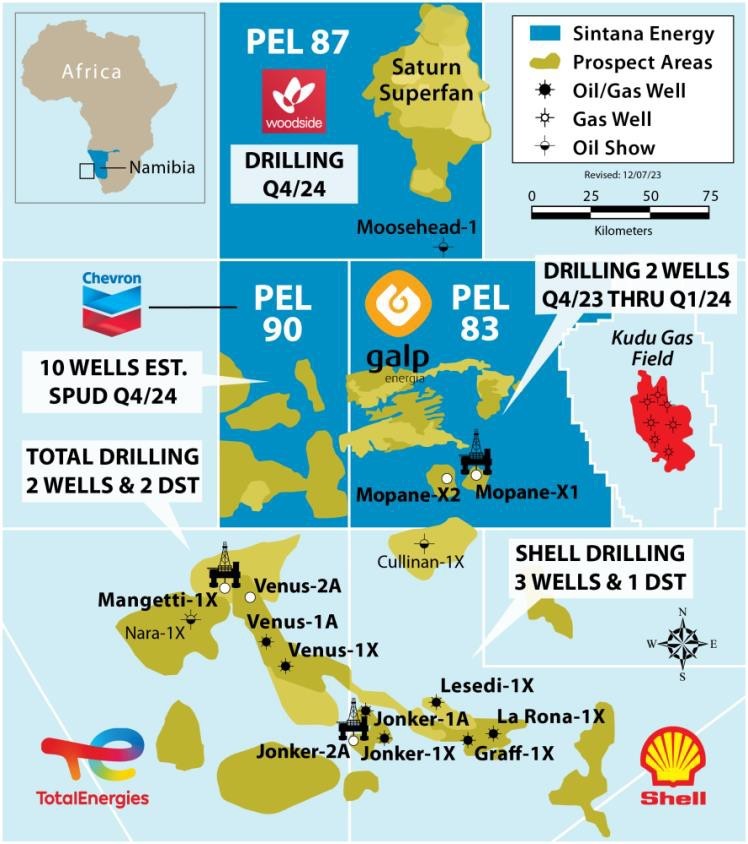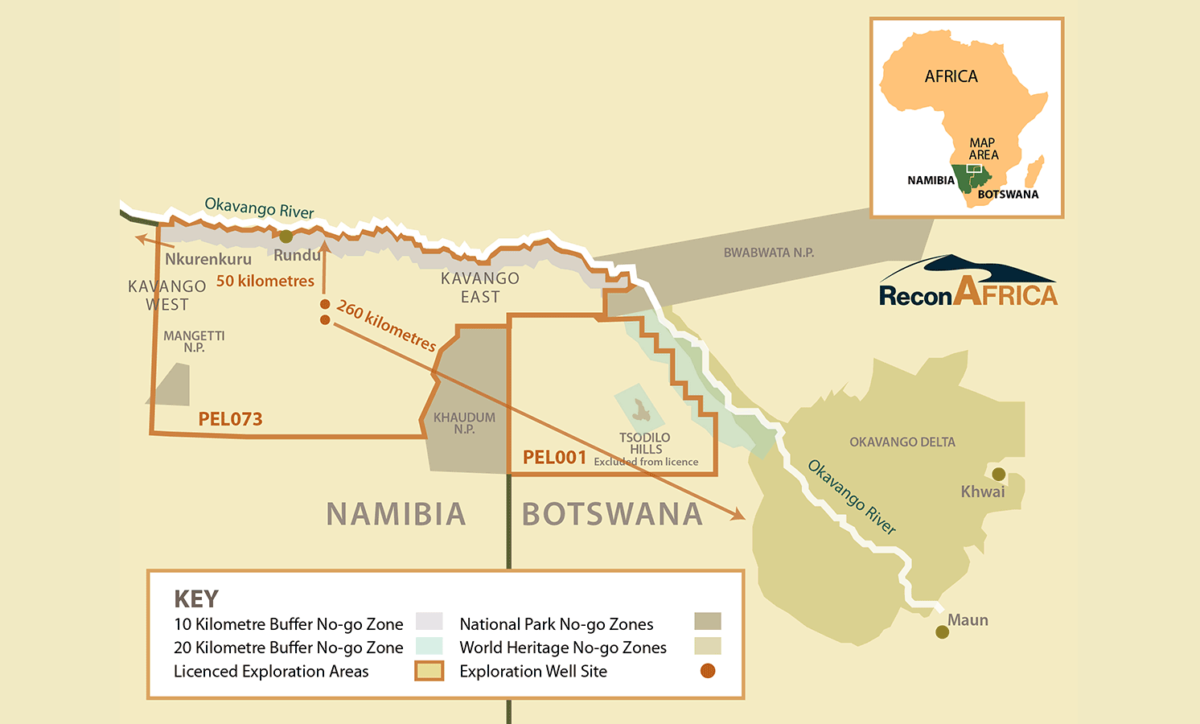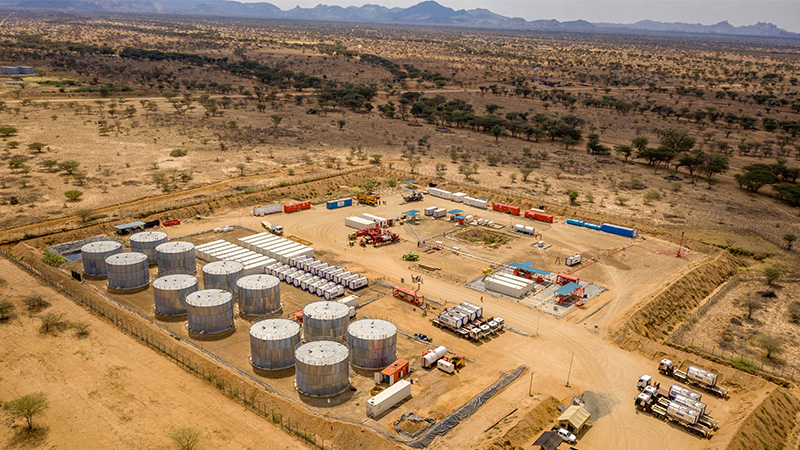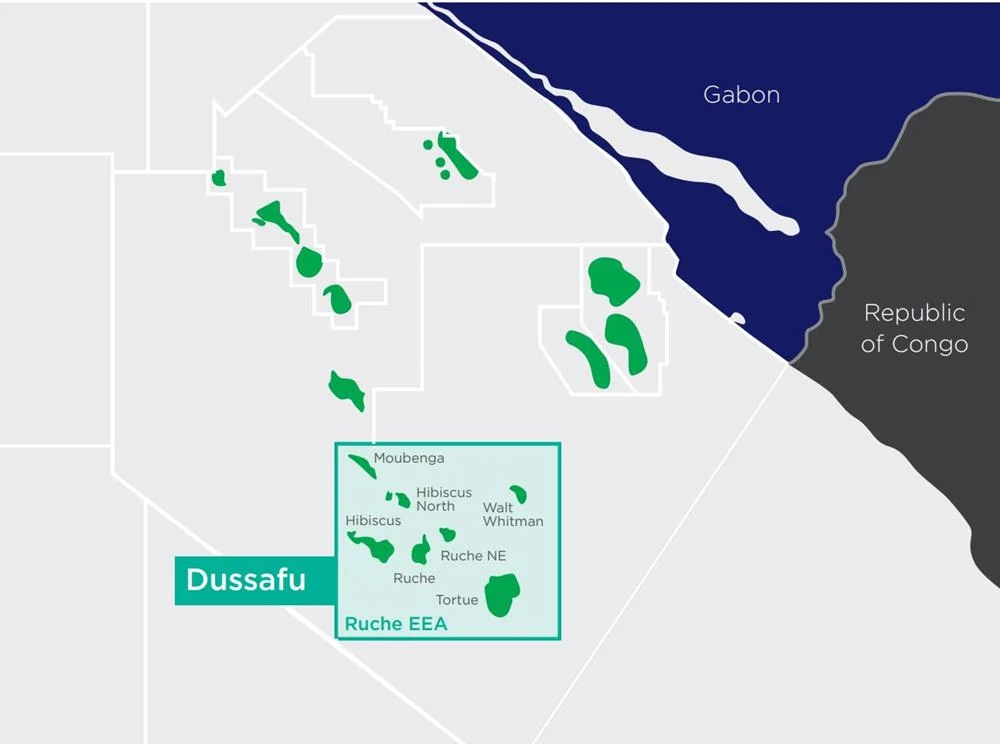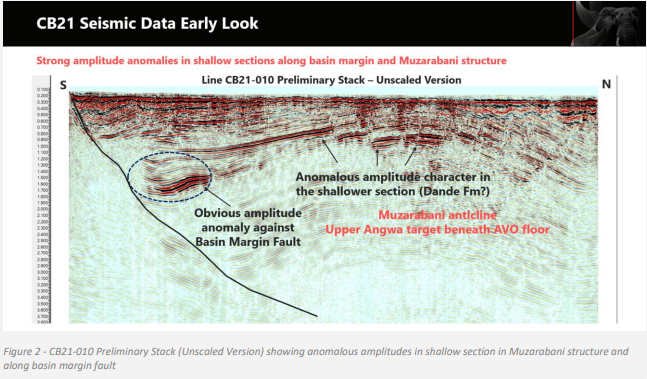ZIMBABWE: Seismic Inversion Results Show Potential for Multiple Stacked Hydrocarbon Bearing Zones in Mukuyu Prospect
Seismic inversion results show potential for multiple stacked hydrocarbon bearing
zones in new Post Dande target (Horizon 200).
Further quantitative analysis (QA) studies continue to provide support for the presence of potential hydrocarbons in the Mukuyu structure. The results from a seismic inversion/QA study indicate that the section immediately below the Horizon 200 target is likely to comprise multiple stacked hydrocarbon bearing zones, ranging in thickness from 40 to 80m. Accordingly this has necessitated an update to the drilling program to include a diverter system for the shallow sections of the Mukuyu-1 well.
The ASX release on 7 April 2022 highlighted the extensive amplitude anomaly at the Horizon 200 level and the very positive correlation of amplitude extent and structural closure – this fit to structure is regarded as a very strong attribute for any prospect and a potential Direct Hydrocarbon Indicator (DHI).
The Horizon 200 target is newly identified from the 2021 Cabora Bassa 2D Seismic Survey and will be first target tested in the Mukuyu-1 well.
While there are no wells present in the basin to enable calibration of the results, the strength of the anomaly and the values calculated are in the range that potentially indicate the presence of light hydrocarbons (most likely gas). The common depth shut-off of the anomaly as seen on multiple lines is further indication of a trapped accumulation.
500 Horizon Target (Upper Angwa) demonstrates extensive flat spot across southern
flank of structure
Additional studies from the seismic interpretation have revealed some very positive elements in the section immediately below the Horizon 500 level. The FAR offset stack section for a series of nine consecutive dip lines across the Mukuyu structure, while the location of these lines. The anomalies within the coloured circles in Figure 3 highlight where an anomalous Nears to Fars anomaly has been noted at the Horizon 500 level.
Of particular interest is the consistent positioning of each of these anomalies and the
persistence at which they occur. These anomalies do extend across to the northern side of the Mukuyu structure, however as the overlying horizons are more faulted there, the seismic raypaths are more complex and therefore less conducive to clearly reveal the AVO (Amplitude Versus Offset) Nears to Fars anomaly on the northern side of the structure.
In places the anomaly often reveals a “flat spot” which can be seen as further validation for the potential presence of hydrocarbons. Such flat spots are usually the seismic reflection from the base of a hydrocarbon column.
Pre-Stack Depth Migration (PSDM) show anomalous, low interval velocity zones,
correlative with target intervals within structural closure in Upper Angwa primary target
(Horizon 500 & 600) potentially indicative of gas fill. Further positive indicators for the potential presence of hydrocarbons can be shown by interval velocity data. Interval velocities are usually slower in the presence of gaseous hydrocarbons where the interval is of sufficient thickness to provide a response. Pre-Stack Depth Migration (PSDM) was undertaken on selected lines for depth control across the project area. As part of the PSDM processing, a detailed interval velocity model is derived.
The interval velocity overlay for dip lines CB21-06 and strike line CB21-02. On
strike line CB21-02, there is a clear lens of lower interval velocity at the 500 – 600 level. This lens appears limited in extent to the breadth of the Mukuyu structure. Similar lenses of lower interval velocity are seen on dip line CB21-06.
This anomalous, relatively slower interval velocity appears to be uniquely associated with the extent of the Mukuyu structure at the lower horizons where gaseous hydrocarbons are more likely. This uniqueness is considered to be a very positive encouragement for the presence of a significant gas interval in the lower primary targets of the Mukuyu structure. The Mukuyu-1 well will test multiple stacked targets within the greater Mukuyu structure which is independently estimated to contain 8.2 Tcf + 247 million barrels of conventional gas condensate (gross mean unrisked).
Managing Director Scott Macmillan commented
“The Cabora Bassa 2021 Seismic Survey data continues to deliver results ahead of the 2-well drilling program scheduled to commence in July. The multiple seismic anomalies evident in the Mukuyu prospect across our numerous stacked target horizons, which also demonstrate structural conformance, is highly encouraging and provides us with increased confidence in delivering a successful exploration outcome. The drilling campaign is taking shape with the Exalo Rig 202 preparing for mobilisation to Zimbabwe and long lead items arriving at our warehouse. The Mukuyu-1 wellpad construction is anticipated to be completed in the next few weeks and we are also continuing to make progress on the selection of the second well location for the upcoming campaign.”







